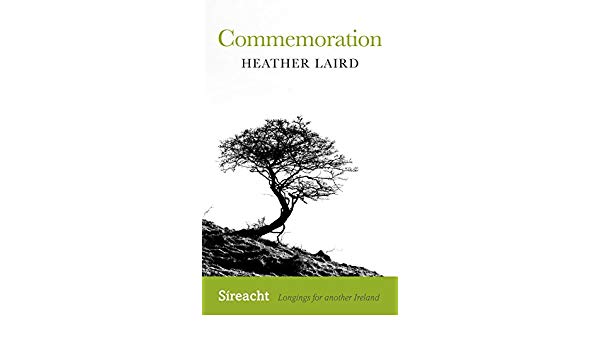Commemoration
by Heather Laird (Cork University Press, €9.95)
Felix M. Larkin
In Evelyn Conlon’s novel Not the Same Sky, one of the characters questions the purpose of memorials – and, by extension, the purpose of historical commemorations generally. She asks: “Are they to let us know? To make us accept? Or are they to make us weep?”
In this short book, one of a series under the general title of ‘Looking for another Ireland’, Dr Heather Laird of UCC suggests another possible purpose – in her view, a more desirable one. It is to draw inspiration from people, events and movements in the past that demonstrate that our society might have evolved in better ways than it has.
Her book accordingly offers “a critique of existing commemorative practices and mainstream history writing … [in order] to open up discussion on the roads untaken in history”.
Observation
It is premised on the entirely valid observation that nothing is inevitable or predetermined in history. History could have gone off in any number of different ways at almost any point. Our commemorations, however, reflect what actually happened – and so tend to reinforce the status quo, with all its faults and failings.
They don’t encourage speculation about whether there might have been outcomes other than the political, social and economic structures that we inherit from the past. Laird argues that we should instead commemorate some of the “roads untaken in history” so as to guide us in our quest for templates for reforming society today.
A particular “road untaken” that Laird considers worthy of commemoration is the idea of land nationalisation which Michael Davitt came to espouse in the 1880s and which led to his break with Parnell and his subsequent marginalisation in Irish politics. Such commemoration would challenge current concepts and practices of land and property usage in Ireland.
In this context, Laird draws parallels between the land insurgency of the late 19th and early 20th Centuries and agitation today about the housing crisis – for instance, the occupation of Apollo House in Dublin in December 2016 to provide emergency accommodation for homeless people over Christmas.
This is an eloquent book, written with great passion. It is required reading for anyone with an interest in the burgeoning field of public history.
Where perhaps it falls short is in focusing on the value of resurrecting the “unrealised but fully realisable” opportunities of the past without emphasising the need to analyse why these opportunities were lost.
Any reform agenda, if it is to succeed, must take account of the factors that stymied previous reform efforts. It is more important to understand the past than to commemorate it.



